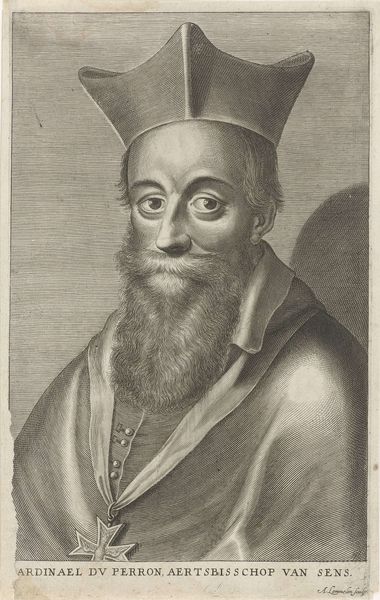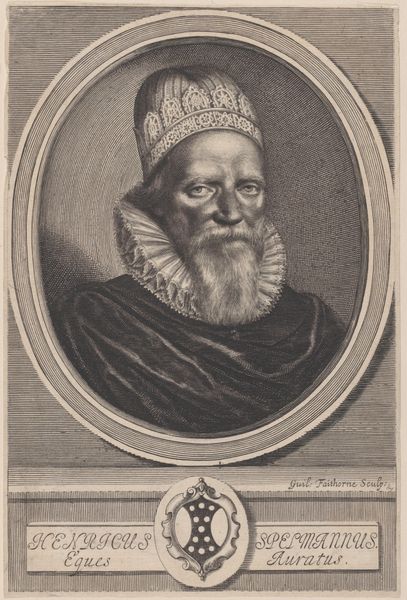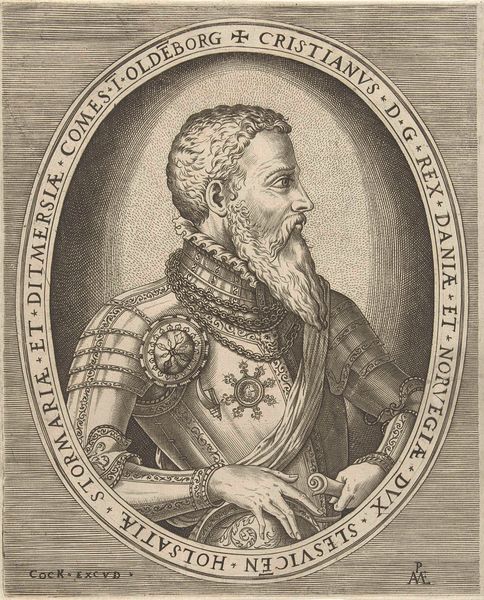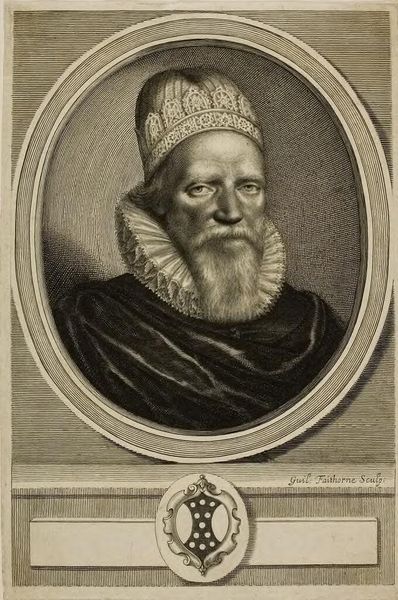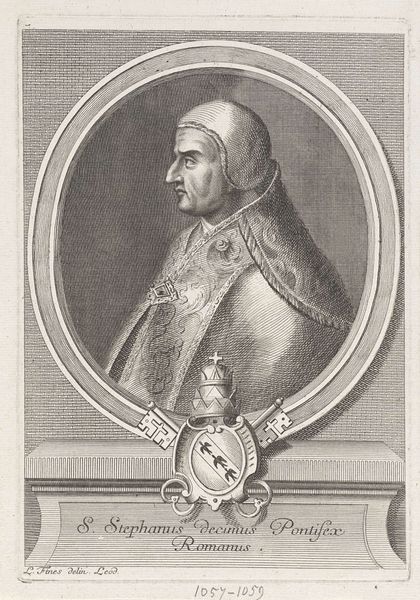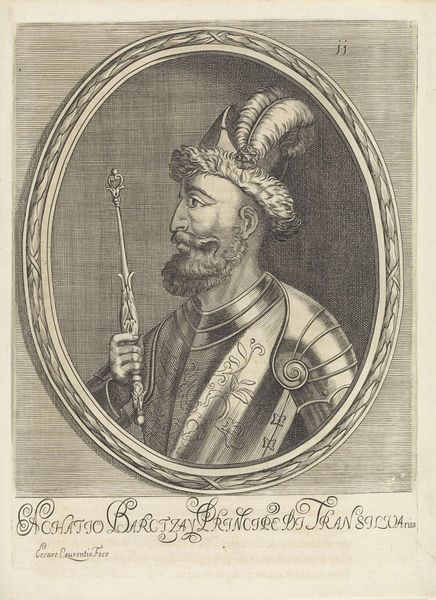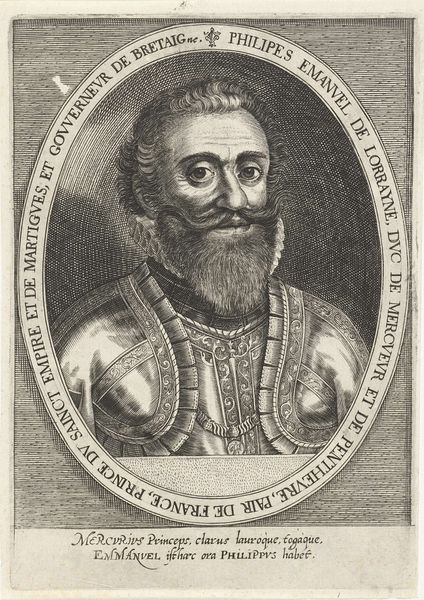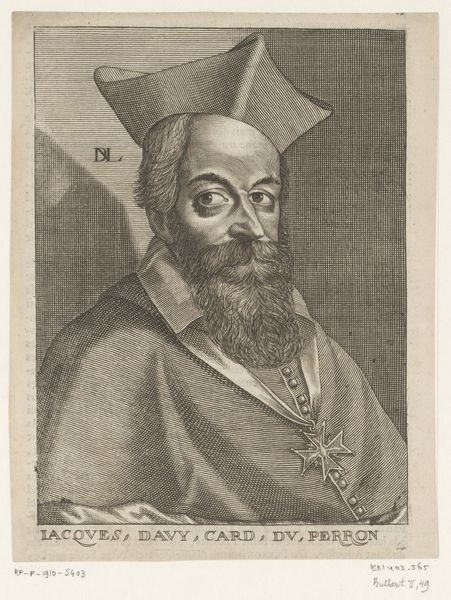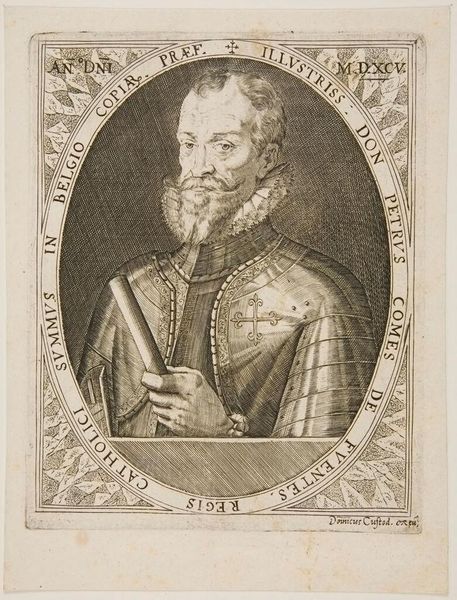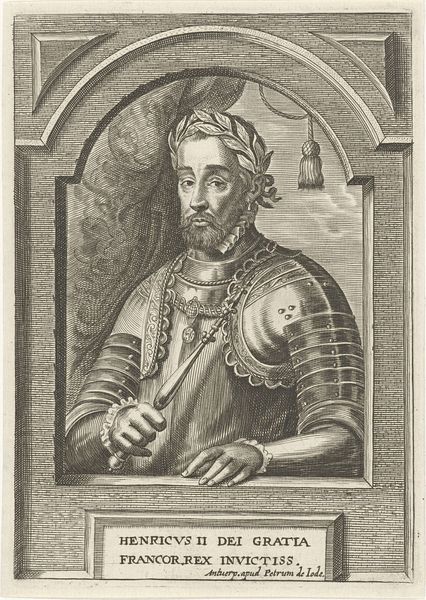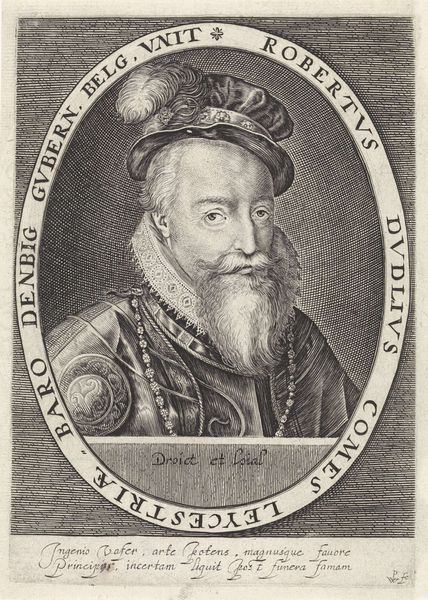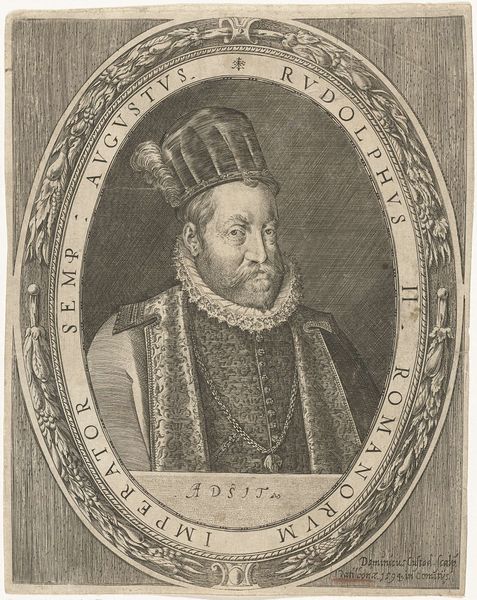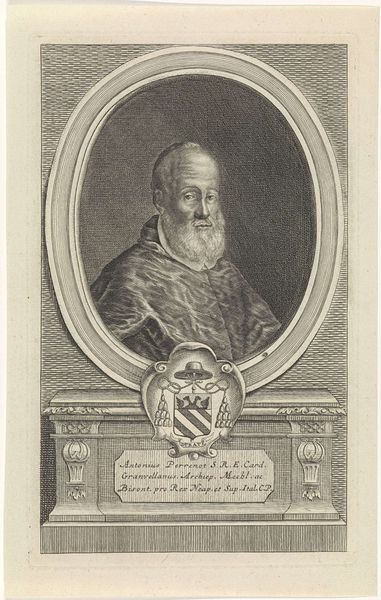
graphic-art, print, engraving
#
portrait
#
graphic-art
#
baroque
# print
#
old engraving style
#
caricature
#
portrait reference
#
engraving
Dimensions: height 246 mm, width 190 mm
Copyright: Rijks Museum: Open Domain
Editor: This is "Portret van Jacques Davy du Perron," created sometime between 1666 and 1707 by Gérard Edelinck. It’s a baroque-style engraving. What strikes me most is the intricate detail achieved solely through lines. What's your perspective on this? Curator: It’s vital to consider Edelinck's engraving not just as an image, but as a product of its time, stemming from both materials and processes. Notice how the burin’s precision allows for the reproduction of detail. The material itself—the copperplate—allowed for editions, impacting accessibility. Editor: So, you’re saying the very *process* of printmaking influenced who got to see and own this portrait? Curator: Precisely. Think of the socio-economic implications: Who had access to the graphic arts? What role did prints like these play in constructing the identity of figures like du Perron? Was it meant for propaganda purposes or historical documentation? These are important factors. Editor: It’s amazing how analyzing the 'how' of its creation opens up these questions about ‘why’ and ‘for whom’. How does this shift our perception of Edelinck himself? Curator: Edelinck was a craftsman, and approaching him as such allows us to value his skill in translating visual information into reproducible form. We can focus on his labour, his choices in materials, and his access to training. Where did he acquire his technical skills? This unveils so much about the art world beyond individual genius. Editor: I see now how the process and materials themselves were integral to both the artwork’s message, as well as its reach and reception in society. Curator: Absolutely, and it's a crucial reminder to look beyond the surface image.
Comments
No comments
Be the first to comment and join the conversation on the ultimate creative platform.

